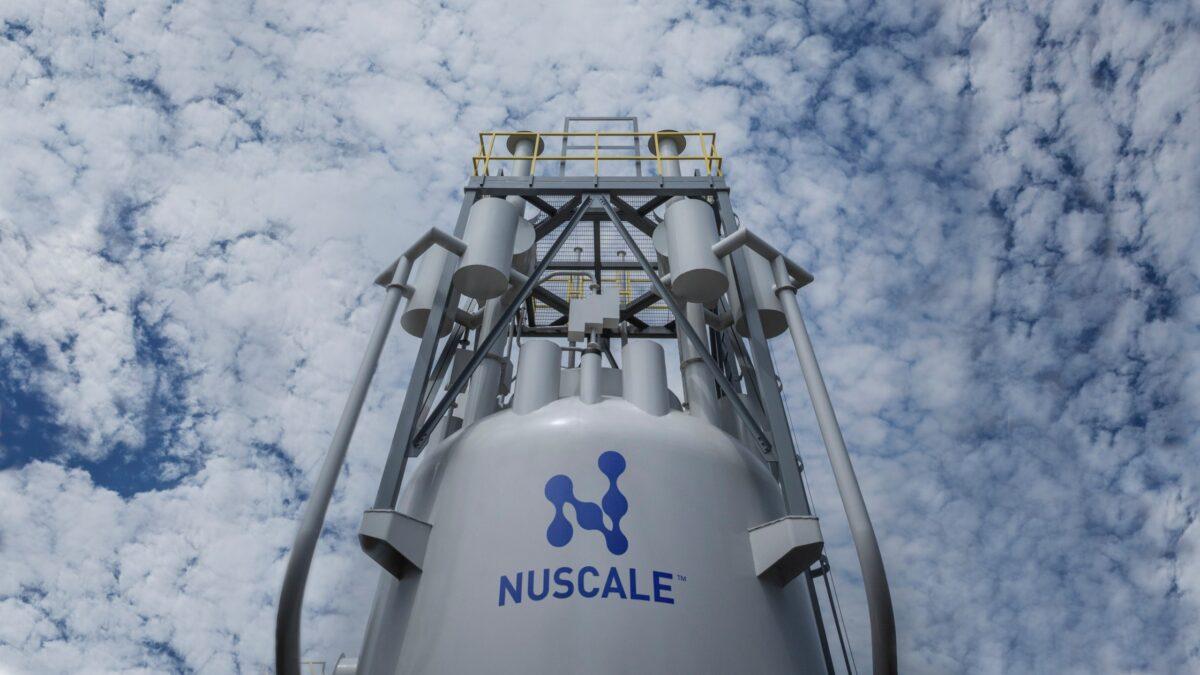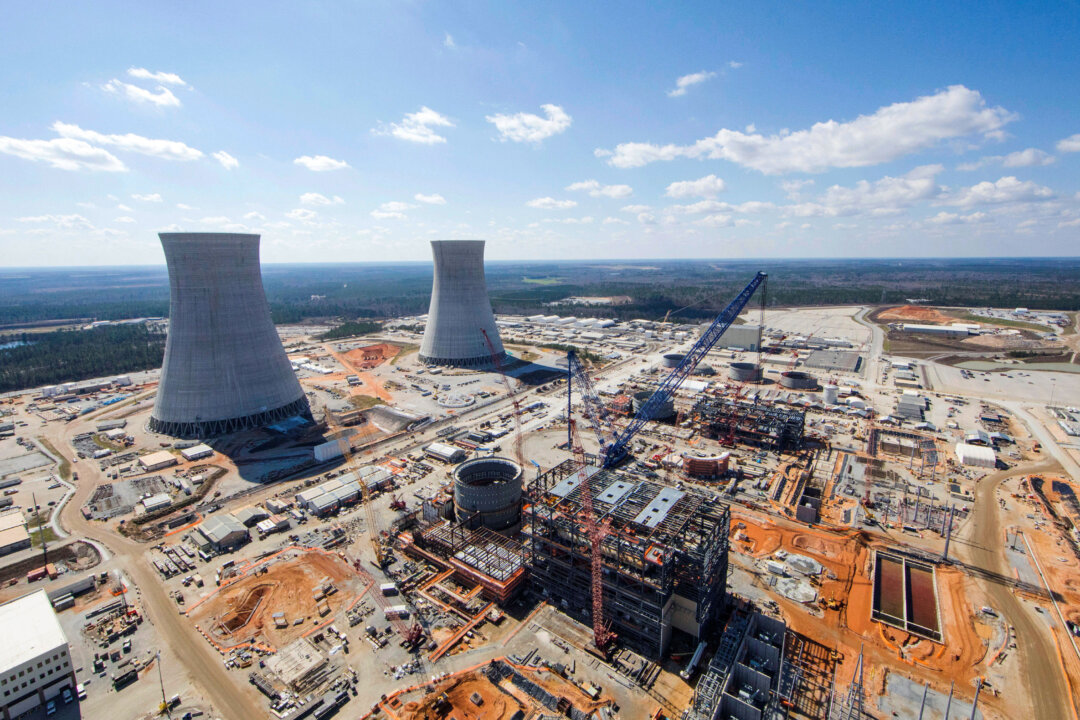The president issues four orders designed to accelerate commercial reactor development and reform the Nuclear Regulatory Agency.
President Donald Trump on May 23 signed four executive orders aimed at kindling an “American nuclear renaissance” by cutting regulations in the industry and fast-tracking new licenses for reactors and power plants.
The executive orders are related to accelerating commercial nuclear energy development, with the industry on the cusp of numerous breakthroughs, such as the Tennessee Valley Authority’s May 20 announcement that it had submitted a permit to install the nation’s first small modular nuclear reactor, or SMR.
The orders require the Nuclear Regulatory Commission to complete license reviews within 18 months, provide federal land for reactor development, and streamline regulations and permitting processes.
The United States is the world’s largest generator and consumer of nuclear energy, with 94 nuclear reactors in 55 power plants, which the U.S. Energy Information Administration calculates generated 18.6 percent of its electricity in 2023.
However, most reactors were built between 1970–1990 and average more than 40 years in service. The only new one to come online in the United States since 2016 is Vogtle’s fourth reactor in Georgia, $16 billion over budget and six years behind schedule.
Safe and Secure Energy
White House Office of Science and Technology Policy Director Michael Kratsios told reporters that between 1950–1980, more than 100 nuclear generators were built in the United States.
“However,” he said, “in the last 30 years, we started and built only two decommissioned commercial reactors across the country, stepped back from nuclear R&D, and abandoned hopes of nuclear energy powering a bright future.”
With the advent of 21st-century innovations in nuclear reactors, such as SMRs, industry groups such as the Nuclear Innovation Alliance say the nation’s regulatory and permitting processes are obsolete.
“America’s great innovators and entrepreneurs have run into brick walls when it comes to nuclear technology,” Kratsios said, calling the president’s executive initiatives a “historic action to ensure America’s energy dominance and provide affordable, reliable, safe, and secure energy to the American people.
“With these actions,” he added, “President Trump is telling the world that America will build again, and the American nuclear renaissance can begin.”

Streamlined Permitting, Land
The first nuclear energy-related executive order aims to accelerate nuclear reactor testing at the Department of Energy’s 16 national laboratories by expediting applications and review processes while launching a pilot program for the construction of new reactor designs in the next two years.
The second streamlines Department of Energy and Department of Defense regulations to build nuclear reactors on federally owned land on or near national labs.
The third executive order outlines a “total and complete reform” of the Nuclear Regulatory Commission and requires it to complete reviews and issue decisions on licenses within 18 months.
The fourth is designed to boost production by “reinvigorating” the nation’s nuclear industrial base, including revamping regulations to resume mining and enriching uranium.
A half century ago, the United States was the world’s largest uranium producer.
In 1980, domestic operators produced and processed 44 million pounds of yellowcake—milled uranium oxide—which made up about 90 percent of the uranium used by 251 nuclear power plants that were operating nationwide then and generated 11 percent of the country’s electricity, according to the U.S. Energy Information Administration.
By the post-Cold War mid-1990s, however, U.S. nuclear power plants were increasingly importing less expensive low-enriched uranium (LEU) largely from Russia and Kazakhstan.
By 2021, only 5 percent of the uranium used by the 55 nuclear power plants operating in the United States was produced domestically, with Canada (27 percent), Kazakhstan (25 percent), Russia (12 percent), Uzbekistan (11 percent), and Australia (9 percent) being the leading suppliers.
Russia’s February 2022 invasion of Ukraine underlined the urgency for the United States and European Union nations to end reliance on imported uranium from Russia and Kazakhstan, spurring Congress to act in a rare display of bipartisan accord.
Since Congress passed the Prohibiting Russian Uranium Imports Act and President Joe Biden signed it into law in May 2023, at least five shuttered uranium mines across four states have been reactivated in response to accelerating global demand for nuclear-powered electricity.
They include the Uranium Energy Corp. at its Christensen Ranch In-Situ Recovery (ISR) operation in Wyoming’s Powder River Basin, which began shipping yellowcake from its Irigaray Central Processing Plant in December 2024.

Building Momentum
The president’s executive orders will add momentum to bipartisan congressional efforts to spur nuclear power and incentivize SMR investment.
The 2024 Atomic Energy Advancement Act, 2021’s Bipartisan Infrastructure Law, and 2022’s CHIPS & Science Act and Inflation Reduction Act (IRA), all include incentives for nuclear energy development, including a 30-percent investment tax credit for nuclear projects and $6 billion in loans, grants, and tax credits for development.
Nuclear power has popular support.
A May 2024 Pew Research Center poll found nearly 57 percent of Americans support it, “and this number has been increasing.”
Among innovations in demonstration stages across the United States under IRA provisions and other inducements is TerraPower’s Natrium Reactor, a 345 MW SFR backed by Microsoft founder Bill Gates in Kemmerer, Wyoming; Dow Chemical/XEnergy’s joint high-temperature, fast-fission reactor in Seadrift, Texas; and Kairos Power’s fluoride salt-cooled, high-temperature 35 MW Hermes reactor in Oak Ridge National Laboratory’s East Tennessee Technology Park.
Secretary of Energy Chris Wright told the Senate Appropriations Committee’s Energy and Water Development Subcommittee on May 21 that these breakthroughs mark the dawn of a new era in commercial electrical power and that sustaining momentum in advanced nuclear generation is “the challenge of our time.”
Senators, however, questioned why the administration’s Fiscal Year 2026 spending request cuts more than $1.1 billion in funding for the Department of Energy’s Office of Science and $360 million from its Office of Nuclear Energy, outlining a $480 million spending plan for an agency that received up to $900 million in annual allocations under the Biden administration.
Wright said his department is reshuffling allocations from Biden-era “intermittent” energy programs, such as solar and wind, and reorganizing its offices and staffing to be more focused on advancing technologies that will triple the nation’s electrical capacity in the coming decades.
“The nuclear industry is quite enthusiastic and quite confident they’re going to have the best environment ever for commercial nuclear power under this administration,” he said.
“What we’re doing is mobilizing tens of billions of dollars of private capital using the government” allocations to anchor those investments.

